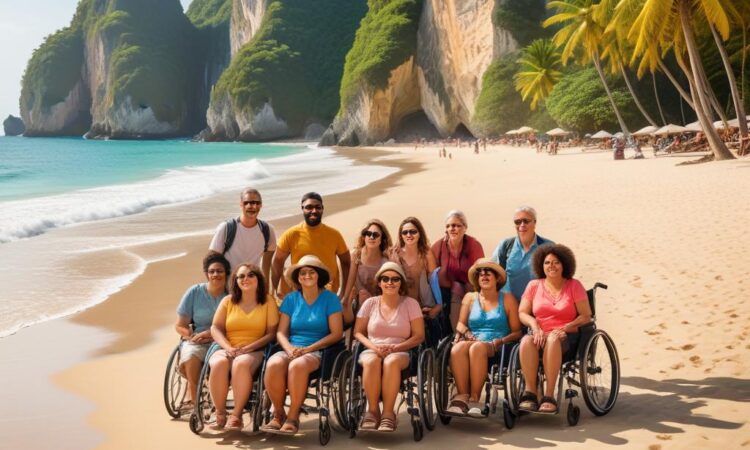Travel Accessibility: A Growing Focus on Inclusivity
The world of travel is becoming increasingly accessible, with a growing awareness of the importance of inclusivity for travelers with disabilities. Destinations around the globe are actively working to improve their infrastructure and services to cater to a wider range of needs, creating a more welcoming and enjoyable experience for all.
The Rise of Accessible Travel
In recent years, the demand for accessible travel has surged, driven by a number of factors. The global population is aging, with a growing number of individuals requiring accessibility features. Furthermore, the disability rights movement has gained significant momentum, advocating for equal access and opportunity for all.
Travel companies are increasingly recognizing the value of catering to this growing market. They are not only making their services more accessible but also promoting the benefits of inclusive travel, highlighting the diverse and enriching experiences that can be enjoyed by travelers with disabilities.
Key Areas of Focus
Accessibility in travel encompasses a wide range of aspects, including:
1. Transportation
Travelers with disabilities often face challenges with transportation. Airports, train stations, and public transportation systems must be adapted to accommodate diverse needs. This includes features like:
- Accessible boarding areas and ramps
- Wheelchair-accessible restrooms and seating
- Clear signage and audio announcements
- Dedicated assistance for travelers with disabilities
2. Accommodation
Hotels and other accommodation providers play a crucial role in ensuring accessible travel. Key features include:
- Wheelchair-accessible rooms with wider doorways and accessible bathrooms
- Visual and auditory alarms for emergencies
- Lower beds and grab bars
- Accessible parking spaces and lifts
3. Attractions and Activities
Attractions, museums, and entertainment venues should also be accessible. This includes:
- Ramps and lifts for access to different levels
- Accessible restrooms and seating areas
- Audio guides and alternative formats for information
- Assistive devices for hearing and visually impaired travelers
Benefits of Accessible Travel
Beyond being a legal requirement, accessibility benefits all travelers. When destinations are designed with inclusivity in mind, it creates a more welcoming and enjoyable experience for everyone, regardless of their abilities. Here are some key benefits:
- Increased tourism revenue: By catering to a wider range of travelers, destinations can attract new markets and boost their tourism economy.
- Positive brand image: A commitment to accessibility demonstrates a destination’s values and creates a positive brand image.
- Enhanced customer satisfaction: Accessible travel experiences lead to happier and more satisfied customers, encouraging repeat visits and positive word-of-mouth.
- Social inclusion: Accessible travel fosters inclusivity and provides equal opportunities for all individuals to experience the world.
Challenges and Opportunities
While significant progress has been made, challenges remain in creating fully accessible travel experiences. These include:
- Cost of implementation: Adapting infrastructure and services can be expensive, posing a financial challenge for some destinations.
- Lack of awareness: Some travel providers and destinations may not be fully aware of accessibility needs and best practices.
- Varying standards: Accessibility standards and regulations can vary significantly across countries and regions, leading to inconsistency in the travel experience.
Despite these challenges, there are also significant opportunities for growth and innovation in the field of accessible travel. This includes:
- Technology: Advances in assistive technology, such as smartphone apps and wearable devices, can significantly enhance the travel experience for people with disabilities.
- Collaboration: Collaboration between governments, tourism organizations, and travel providers is crucial to promote accessible travel and share best practices.
- Increased awareness and advocacy: Raising awareness of accessibility needs and promoting advocacy efforts are essential to drive change and ensure that all travelers are included.
A Brighter Future for Accessible Travel
The future of travel is becoming increasingly accessible, driven by a growing recognition of the importance of inclusivity and the benefits it brings. As destinations and travel providers continue to prioritize accessibility, a more welcoming and enjoyable experience will be available for all travelers, allowing them to explore the world with greater freedom and independence.
Conclusion
Accessibility is no longer a niche concern but a fundamental aspect of creating a more welcoming and inclusive travel experience. By working together, governments, tourism organizations, travel providers, and individuals can ensure that all travelers have the opportunity to experience the joy and wonder of exploring the world.

